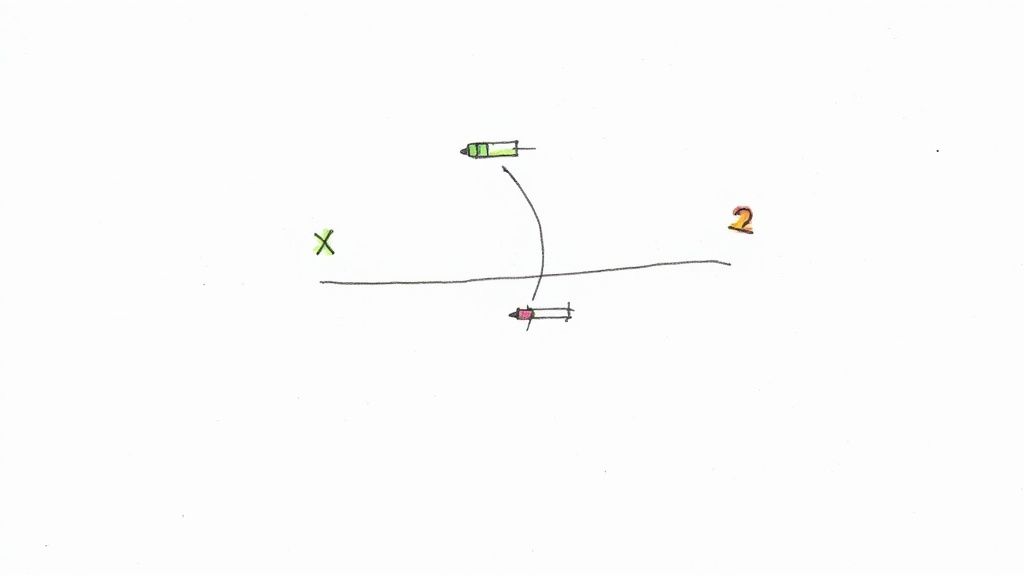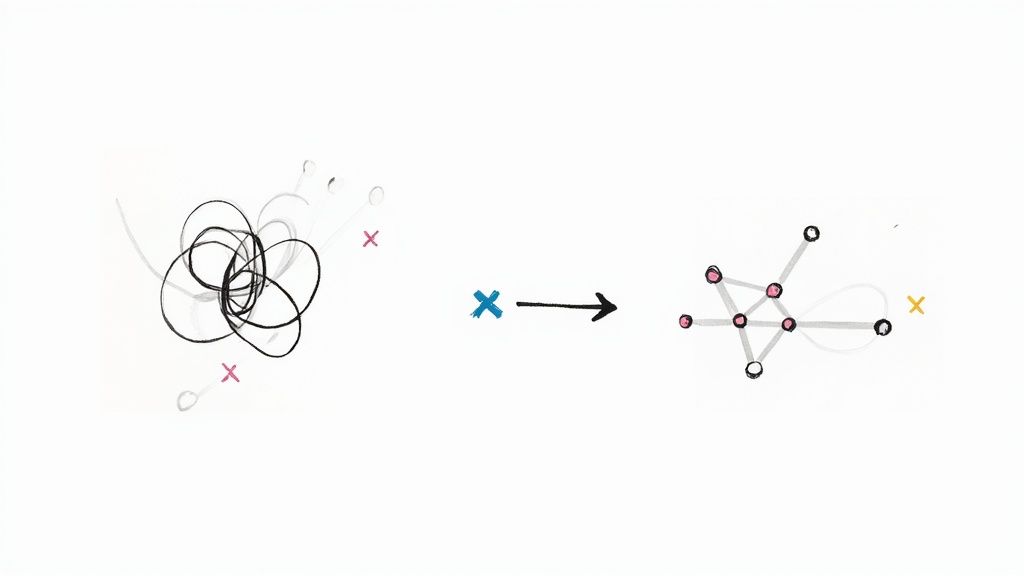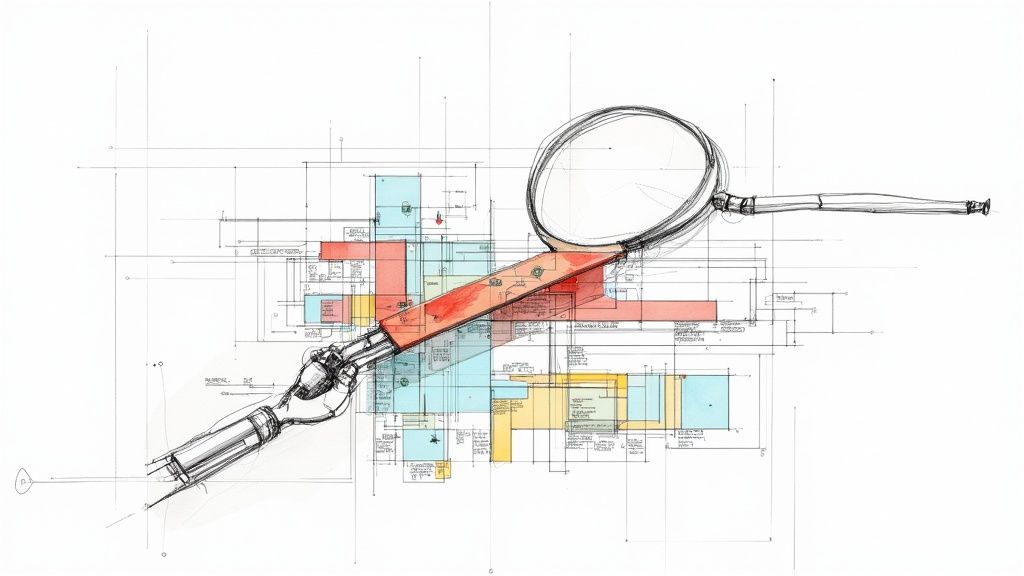What Are Linters: Your Essential Guide to Code Quality Tools That Actually Work

The Evolution of Linting: From Simple Checks to Smart Analysis
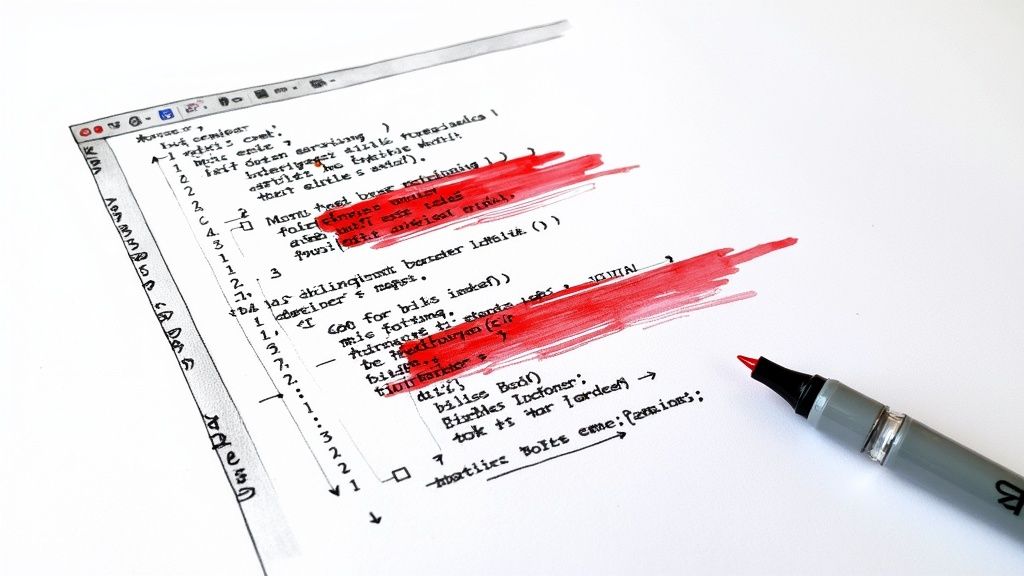
When linters first appeared, they focused on catching basic syntax errors and obvious bugs in code. These early tools served as a basic quality check before compilation or execution. While helpful for catching simple issues like missing semicolons, they couldn't identify deeper logical problems that could cause programs to behave unexpectedly.
As software projects grew larger and more complex, developers needed better code analysis tools. Teams now work with massive codebases across multiple languages, making code quality more important than ever. Modern linting tools have adapted to meet these challenges with smarter analysis capabilities. The original lint tool, created by Stephen C. Johnson at Bell Labs in 1978 for C code, set the foundation for today's advanced tools. Check out more history here: What is a Linter?
From Syntax to Semantics: Expanding the Scope of Linting
Modern linters do much more than check syntax - they analyze code for a wide range of potential problems. They can spot style inconsistencies, find security issues, and identify likely bugs before they cause problems. For example, linters now detect unsafe memory usage patterns and potential security risks like SQL injection vulnerabilities. This broader analysis helps teams maintain high-quality, secure code throughout development.
The Rise of Smart Linters: Integrating with Modern Development Workflows
Today's linters work seamlessly with development tools like code editors and build systems. They provide instant feedback as developers write code and run automatic checks during the build process. Teams can customize linting rules to match their coding standards and project requirements.
The flexibility to adapt linting rules means teams can enforce consistent practices while focusing on what matters most for their specific needs. As these tools continue to improve, they're starting to use advanced techniques to catch even more subtle code issues. This makes linters an essential part of writing quality software.
Smart Linting: Improving Development Workflows
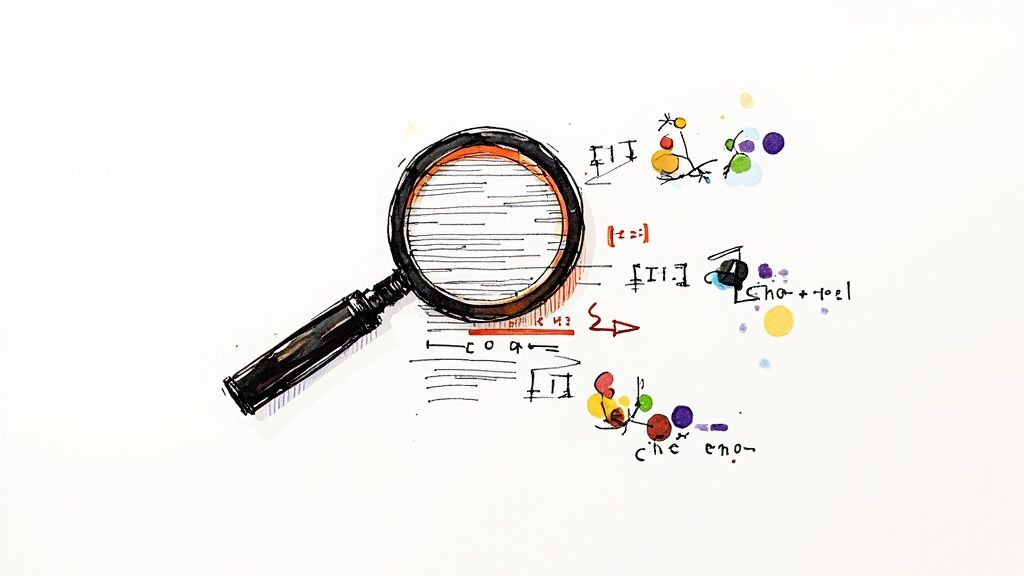
Linters are changing how development teams handle their code. By automatically checking for potential issues, they free up developers to tackle more complex challenges. Rather than fixing bugs after they appear, linters help prevent them from occurring in the first place.
Quick Bug Detection Reduces Future Problems
One major advantage of linters is finding bugs early in development. They can spot potential syntax errors, style issues, and some logic problems before code reaches production. Finding these issues early saves significant time and money compared to fixing them later. By maintaining consistent code standards, linters also reduce technical debt, making code easier to update and maintain.
Better Code Reviews and Team Collaboration
Linters make code reviews more effective. Since they handle basic style and formatting checks automatically, reviewers can focus on important aspects like code architecture and logic. This leads to faster, more valuable reviews. Teams also benefit from having shared coding standards, which reduces conflicts about style preferences and creates clear quality expectations.
Real Results From Using Linters
The benefits of linters are backed by data. Research shows that using linters can cut bugs and errors by up to 50% and make code 30% more readable. Teams spend about 20% less time on code reviews since they can concentrate on higher-level code aspects instead of formatting details. When linters are part of CI/CD pipelines, they ensure only quality code gets deployed. For more details: Read about linter benefits and statistics.
Moving From Manual to Automated Checks
Modern linters have grown beyond simple syntax checking into robust code analysis tools. This shift has turned code quality from a manual task into an automated part of development. By catching issues early and enforcing standards automatically, linters help teams write better code faster. Teams that use linters effectively can focus more on building great software and less on finding basic code issues.
Choosing the Right Linting Tools for Your Tech Stack

Picking the right linters takes careful consideration of your team's specific needs. Your programming language, team size, and project requirements all play key roles in determining which tools will work best. What's ideal for one development team may not suit another.
Language-Specific Linters: Finding the Right Fit
Most linting tools are built for specific programming languages. ESLint shines for JavaScript projects, while PyLint helps Python developers catch errors early. For styling code, StyleLint helps teams maintain clean and error-free CSS. Using a linter made for your language gives you deeper insights into potential issues and helps enforce best practices unique to that language.
Exploring Popular Linting Tools
Here's a quick look at some widely-used linting tools:
| Linter | Language | Description |
|---|---|---|
| ESLint | JavaScript | Highly configurable and widely used for identifying and fixing JavaScript code issues. |
| PyLint | Python | Helps enforce coding standards and detect errors in Python code. |
| StyleLint | CSS, etc. | Focuses on style and formatting issues within stylesheets. |
| RuboCop | Ruby | Analyzes Ruby code for style and potential errors. |
| Go Meta Linter | Go | Combines several Go linters into a single toolset |
While not exhaustive, this list provides solid starting points for various tech stacks. Many other quality tools exist - take time to research options that match your needs.
Combining Linters for Comprehensive Coverage
Many development teams find value in using multiple linters together. For example, a team working with JavaScript frontend and Python backend code might run both ESLint and PyLint. Adding a general-purpose linter can catch issues that language-specific tools miss. This multi-tool approach helps maintain high code quality across the entire codebase.
Considering Project Needs and Team Size
Your project's scope should guide linter selection. Small projects often work well with a single, well-configured tool. Larger projects typically need multiple linters and careful integration into the development workflow. Team size matters too - bigger teams need clear coding standards backed by consistent linting. Consider your build system requirements and existing tools when making choices.
By weighing these factors carefully, you can select linters that truly improve your code quality and make your development process more efficient. Making smart choices about linting tools is a key step toward building better software.
Mastering Linter Configuration and Customization

Getting the most out of linters requires proper configuration. Simply installing them isn't enough - you need to customize the rules to match your team's needs and coding standards. The right setup helps maintain code quality while keeping the development process smooth.
Balancing Strictness and Flexibility in Your Linter Rules
Finding the sweet spot between strict rules and practical flexibility is key. While consistent code style matters, rules that are too rigid can slow down development. For example, enforcing specific naming patterns for every variable might create unnecessary overhead. Focus on rules that improve code readability and prevent common mistakes.
Integrating Linters with Your IDE for Real-Time Feedback
Set up your linters to work directly in your code editor. This gives you instant feedback as you write code, catching issues before they make it into version control. Most code editors offer linter plugins that work seamlessly. Quick feedback helps build good coding habits and stops small issues from growing into bigger problems.
Customizing Configurations for Better Results
Default linter settings rarely fit every team perfectly. Take time to adjust your configuration file to match your needs. Decide which rules to enforce strictly, which should trigger warnings, and which to skip. For example, you might set strict rules for security issues while being more flexible with code style preferences. Good configuration makes linters help rather than hinder your workflow.
Gradual Introduction of Stricter Rules
Adding strict linting rules to an existing project can overwhelm the team. Instead, start with basic rules and slowly add more over time. Begin with critical rules first, then add others as the team adjusts. This approach lets everyone adapt naturally and helps you fine-tune rules based on real project needs.
Managing Exceptions and Overrides
Sometimes code needs to break linting rules for valid reasons. Linters let you add exceptions and overrides for these cases. But use them sparingly - too many exceptions weaken your coding standards. Always document why you needed an exception to help others understand the reasoning. Review these exceptions regularly to see if they're still needed. This balanced approach keeps your code consistent while allowing flexibility when truly needed.
Building Robust CI/CD Pipelines with Integrated Linting
Adding linters to your CI/CD pipeline helps catch code issues early and maintains high quality standards. When you check code automatically before it reaches production, you end up with cleaner, more reliable software and fewer surprises down the road.
Automating Code Quality Enforcement
Modern development teams run linting checks on every code commit as part of their CI/CD process. This automatic checking removes human error and ensures consistent code quality without manual effort. For instance, you can set up Mergify to run linting tools during pull requests, making sure code meets standards before merging.
Managing Linting Configurations Across Repositories
When working with multiple code repositories, keeping linting rules consistent becomes critical. A central set of linting configurations that all projects share helps maintain uniform standards. The CI/CD pipeline can access these shared rules across different repositories, making code easier to read and maintain throughout the organization.
Ensuring Consistent Standards Throughout the Deployment Pipeline
Code quality checks should happen at multiple stages, not just at the start. By running linters during staging and pre-production phases, you catch potential issues before they affect users. This ongoing monitoring at each step creates a more stable codebase and reduces production problems.
Handling Linting Failures and Reporting
Your CI/CD pipeline needs clear processes for handling linting errors. This could mean stopping pull request merges, sending team notifications, or starting automatic fixes. Good reporting helps developers quickly spot and fix problems, supporting better code quality over time. Tools like Mergify can block merges and report issues until they're resolved.
Maintaining Code Quality at Scale
As projects get bigger, automated quality checks become even more important. Running linters throughout your CI/CD pipeline helps keep code clean across large codebases and distributed teams. By consistently checking code quality, teams work together more smoothly and create better software. Regular enforcement of standards prevents technical debt from piling up and keeps your codebase healthy long-term.
Overcoming Common Linting Challenges and Pitfalls
While linters bring clear benefits, teams often face real struggles when adopting them. Success requires thoughtful handling of team dynamics, technical debt management, and finding the sweet spot between automated checks and developer judgment.
Gaining Team Buy-in and Establishing Meaningful Standards
Getting developers excited about linters can be tricky at first. Many resist what they see as extra hoops to jump through or restrictions on their coding style. The best approach? Start small with a few key rules that clearly improve code quality. Focus on how linters catch bugs early and make code easier to read. As the team sees these benefits firsthand, gradually add more rules that match their needs and workflow. This steady approach helps build solid standards without overwhelming anyone.
Handling Legacy Code and Managing Rule Exceptions
Large existing codebases pose special challenges when adding linters. Running checks on old code often reveals hundreds or thousands of issues - enough to make any team's eyes glaze over. A practical solution is to focus linting on new code first, then clean up legacy code bit by bit during regular maintenance. And while consistency matters, sometimes rules need exceptions. Most linters let you bypass specific checks when it makes sense, as long as you document why clearly.
Enhancing, Not Hindering, Development Velocity
Some worry linters will slow them down, but the opposite is often true. By catching problems early in development, linters prevent bugs from sneaking into testing or production where fixes cost much more time and effort. Think of linters as helpful assistants that handle tedious checks automatically, freeing developers to tackle interesting problems. For instance, running linters in CI/CD pipelines keeps code clean automatically and helps avoid time-wasting rollbacks.
Balancing Automation With Human Judgment
While linters excel at enforcing style and catching common mistakes, they can't replace thoughtful code review by developers. Human reviewers still need to evaluate design choices, verify business logic, and spot subtle issues automated tools miss. The best results come from combining linter automation for basic checks with developer expertise for deeper analysis.
Ready to improve your code quality process? See how Mergify can help you seamlessly integrate linters into your workflow.


